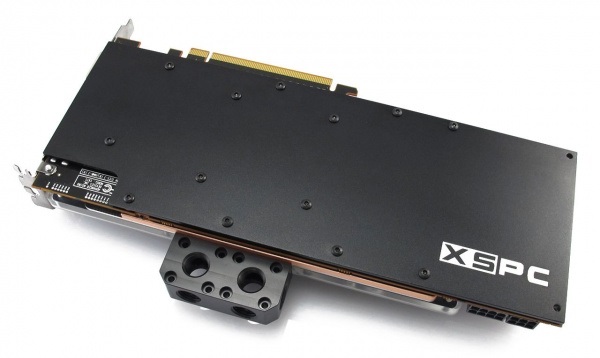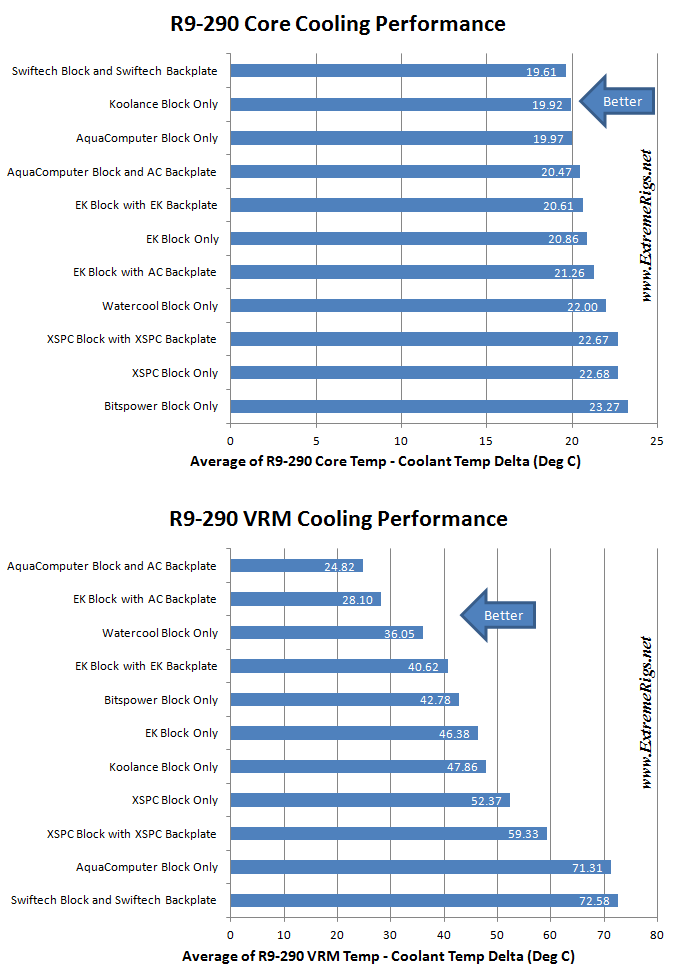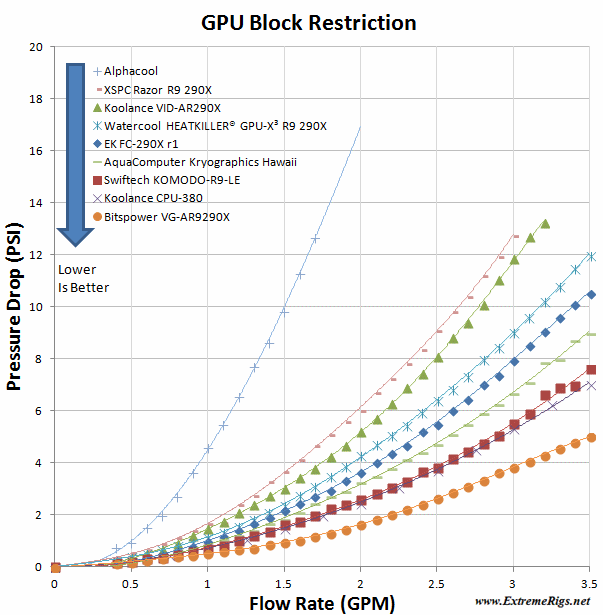This review was delayed for a while as I worked with XSPC to try and understand why the design – essentially the same as the Gold winner in the Titan roundup did comparatively worse this time around.
The block comes in the standard XSPC packaging. Opening it up:
Screws, red washers, LEDs, TIM, stop fittings and instructions. What more could you ask for?
The block continues the now familiar XSPC style – copper base, acrylic with inlaid brushed aluminum insert. The bridge has a ton of input and output ports. I would go so far as to say it’s too many:
Choice is a good thing, but it ends up looking ugly. The base is copper with brass standoffs:
Machining marks are there but very slight:
Once mounted the oversize block looks nice:
Taking the block apart – we see the copper is sealed with a stainless steel plate. The acrylic/brushed aluminum is purely decorative:
The VRM cooling is hopped up over the chokes with this small addon block:
The bridge may even be reused from previous models:
The internals are very simple and the copper is surprisingly thin, presumably to keep costs down:
The backplate which does not use any thermal pads is improved over previous generations – but the XSPC logo is quite large and obtrusive, while the screws would look better if they were countersunk. Still at least they are black and blend in reasonably well:
Thermal Performance
For detailed thermal performance check out the detail thermal results page! Here is the synopsis:
From this we can see that the gpu core temperatures are not the worst. However it was very obvious that the TIM was not spreading as well as it should. It is paramount if you buy this block that you do a test fit to make sure you have enough TIM. To get good coverage and better results I needed about 3x the normal amount. Even removing all thermal pads, the standoffs prevented me from getting the block as close as I would like to the GPU core. From debugging with XSPC we found that the card XSPC used to design the block on had a slightly different GPU core height than all three of my test samples and to a later sample they bought. If they had have got a card with a similar height to my sample then the block would have performed a lot better. This is something to always remember when looking at test results. We can easily forget that manufacturing tolerances can be the reason why reviewers sometimes disagree about which design is best.
The VRM on the other hand did make good contact but performance there was hardly stunning. The backplate due to it’s lack of thermal pads only serves to insulate the card and hurts the VRM temperatures.
Restriction wise we see that the XSPC is nowhere near as bad as the Alphacool, however if it wasn’t for the Alphacool we would be calling it disappointing relatively. Certainly it could be improved, but it isn’t really a problem.
Summary
After the Titan block results, we firmly expected XSPC to come out on top. Due to poor luck with the 290x samples used by XSPC during block design this one ended up being a bit of a miss. Having said all of that there is nothing bad about the block but it simply doesn’t stand out on any metric, particularly when it isn’t even the cheapest. Hopefully the performance issues won’t happen again, but the price is not in line with the competition given the other data. 2nd worst VRM temps, 2nd worst restriction, 2nd worst core temps and the backplate should at least add thermal pads to help out given the high price.
Where to buy:
Block $135 @ PPCS
Backplate Backplate – $40 @ PPCS




























[…] Alphacool GPX-A290 AquaComputer Kryographics Hawaii Bitspower VG-AR290X EK FC-290X (Rev 1) Koolance VID-AR290X Swiftech KOMODO-R9-LE Watercool HEATKILLER GPU-X3 R9 290X XSPC Razor R9 290X […]
stren: FWIW there is a thread on overclock.net specifically about the bad thermal performance of the VRM cooling on this card, it came down to the thermal pads being pretty bad quality and when replaced with fujipoly ultra extreme the block was far more efficient. i doubt you would want to redo this one test to try it but maybe you could do an article on TIMs and thermal pads and using good ones not supplied by the manufacturer.
i have also used thermal pads on the back of the card between it and the backplate, it may not be machined for it but it does help the vrm a bit, of course as you said depending on the card YMMV.
here is the thread BTW.
http://www.overclock.net/t/1468593/r9-290-x-thermal-pad-upgrade-vrm-temperatures
Comments are closed.